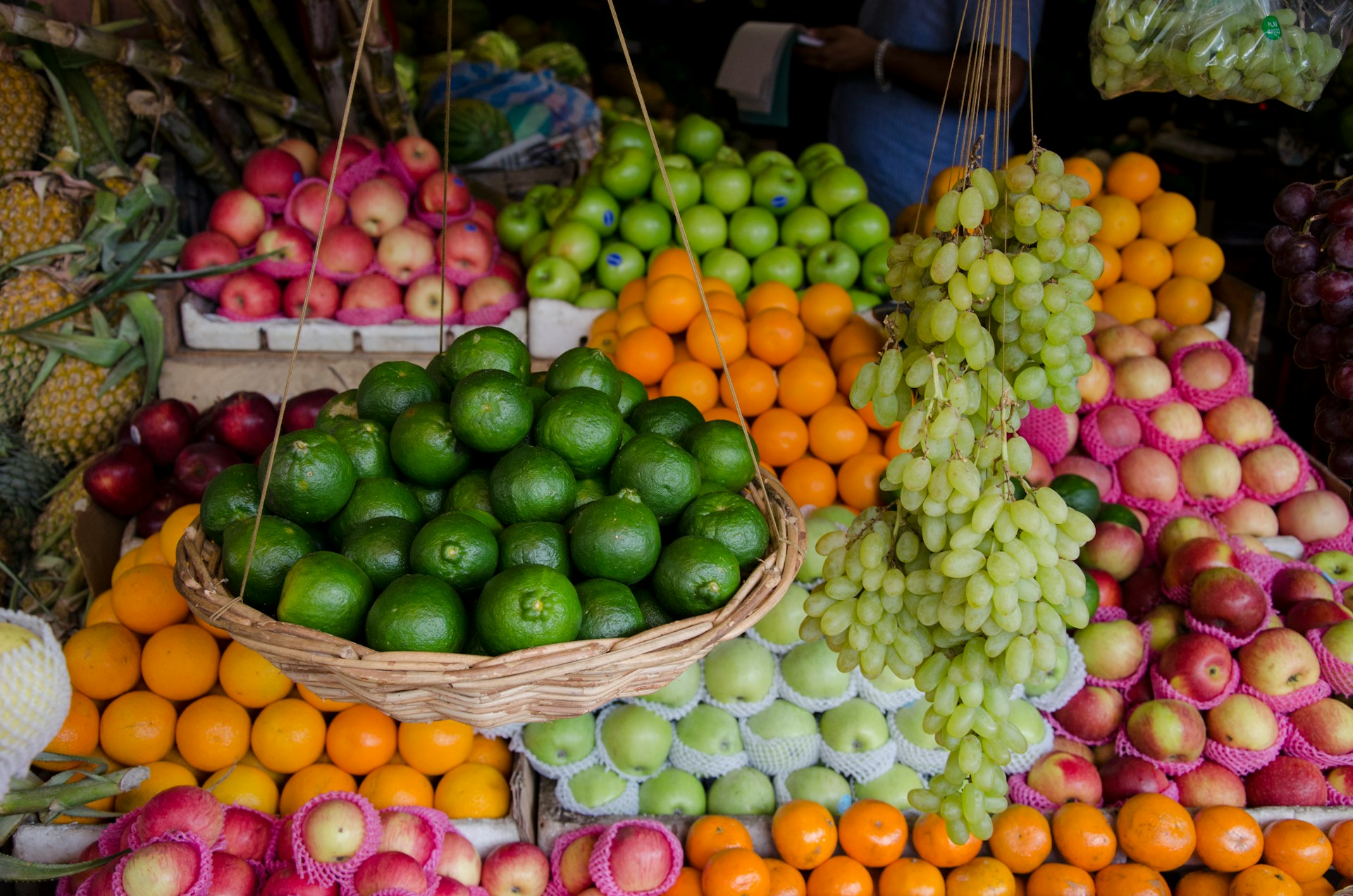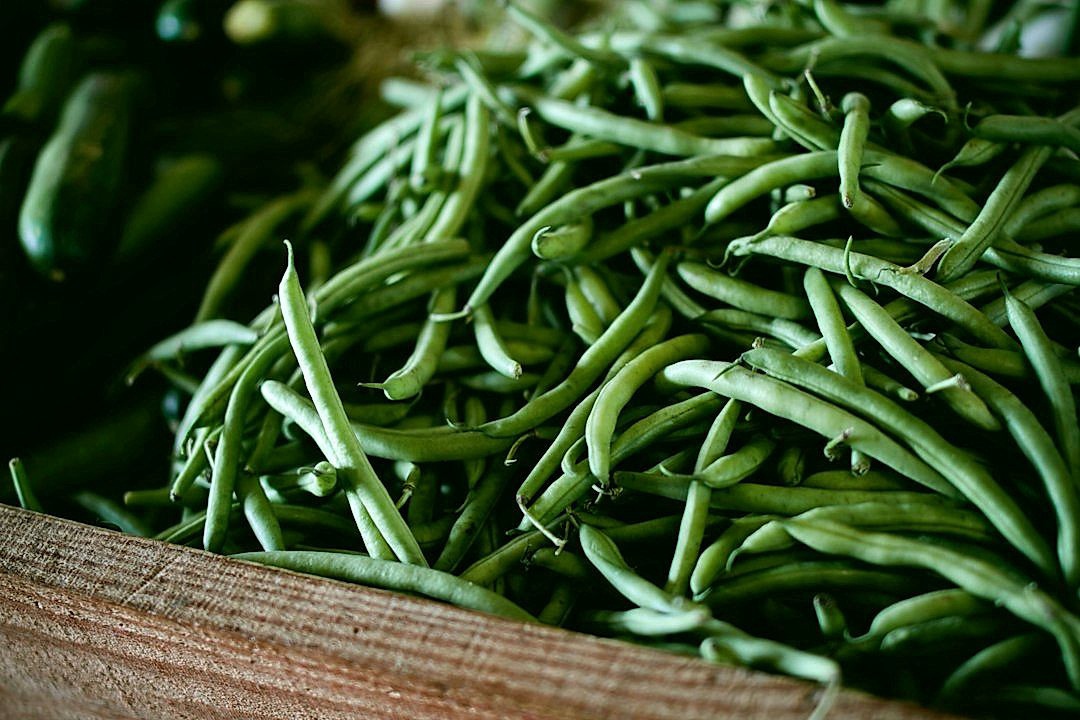The world of distribution, particularly regarding fresh produce, is complex and intense.
The success of such operations relies heavily on efficiency and smart strategies.
In this fast-paced sector, wasting time is simply not an option.
Furthermore, given the sensitive nature of the goods involved, their proper handling and timely delivery become paramount.
Effective transport is, therefore, a critical part of the entire distribution system.
This blog aims to present valuable insights into methods and approaches that can significantly enhance your produce distribution operations.
Contents
- Efficient Produce Distribution Transport Tips
- 1. Use advanced route planning and tracking software
- 2. Maintain proper temperature throughout transport.
- 3. Effectively pack products to maximize space.
- 4. Consolidate Shipments to Reduce Transportation Costs
- 5. Implement Regular Vehicle Maintenance
- 6. Train Drivers on Fuel-Efficient Driving Techniques
- 7. Optimize Load Capacity of Vehicles
- 8. Choose the shortest and safest routes.
- 9. Use sustainable packaging materials
- 10. Regularly Review and Update Logistics Strategies
- The Bottom Line
Efficient Produce Distribution Transport Tips
1. Use advanced route planning and tracking software
In the realm of produce distribution transport, using an advanced route planning and tracking software is absolutely critical to ensure efficiency and reduce unnecessary costs.
Such software applications offer capabilities that can map out the most efficient routes for distribution, taking into consideration factors like road conditions, weather, and traffic patterns.
They can also track vehicles in real time, providing invaluable data about delivery times, vehicle speed and idle times, which can be used to improve operational efficiency.
With advanced route planning and tracking software, managers can gain incredible visibility into their transport operations and make data-driven decisions that boost efficiency and productivity.
By eliminating the guesswork involved in route planning, these advanced software significantly cut down on time spent on this task and increase the overall effectiveness of the transport process.
Not only do they provide optimized routes, but they also facilitate contingency planning in case of unexpected events such as accidents, roadblocks, or sudden changes in weather.
Through intelligent mapping and GPS technology, these applications can predict and avoid potential issues that might lead to delays, ensuring the timely delivery of produce.
Moreover, they facilitate two-way communication between the drivers and the central office, reducing misunderstandings and ensuring motorists are always up-to-date with any changes to the plan.
The tracking aspect of the software is equally beneficial as it allows for the real-time monitoring of the delivery process, gives instant updates on the vehicle’s location and status and may even include features like geofencing, alerting managers if a vehicle strays from its planned course.
By leveraging this technology, businesses can significantly reduce fuel costs, unnecessary mileage, and excessive overtime, leading to an optimized and more effective produce distribution transport.
It’s important to note, however, that the choice of software needs to be carefully considered, based on the specific needs, budget, and operations of the business.
There are various options available in the market with a range of features and pricing models, and it’s crucial to choose a software that aligns with the organization’s requirements and can integrate seamlessly with existing systems.
Training staff to use this software to its full potential is equally crucial. Unless they are familiar with all its features and how to use them, the true benefits of the application might not be realized.
In conclusion, advanced route planning and tracking software plays an indispensable role in modern produce distribution transport, paving the path for increased operational efficiency, better resource utilization, and significant cost savings.
2. Maintain proper temperature throughout transport.
One of the key elements of efficient produce distribution transport is maintaining the correct temperature throughout the transportation process.
This is because temperature control is paramount to maintaining the freshness and quality of fruits and vegetables.
The temperature in the transport vehicle should be set based on the specific needs of the produce being transported, as different fruits and vegetables require different temperature ranges.
For instance, certain fruits like apples and pears require cool temperatures, while others like bananas and tomatoes need warmer environments.
As such, understanding the unique temperature requirements of each type of produce is key to ensuring its viability upon arrival.
Not only does the right temperature prevent spoilage, but it also helps to maintain the flavor and nutritional value of produce, which is always a concern for end consumers.
To ensure optimal temperature control, it’s important to invest in refrigerated transport vehicles that offer adjustable temperature settings.
High-quality refrigerated vehicles should also have efficient insulation to maintain consistent internal temperatures, even when external temperatures fluctuate.
Another aspect to consider is how the produce is loaded into the transport vehicle.
If the produce is packed too tightly, it can result in uneven cooling, with those items in the center being at a higher temperature than those near the cooling unit.
To avoid this, it’s crucial to create spaces between produce containers to allow for proper airflow and equal cooling through the vehicle unit.
Regular checks of temperature controls should be made throughout the journey and adjustments made accordingly, protecting the integrity and quality of the produce.
Temperature tracking devices could be helpful in maintaining a record of temperature variations during the journey.
Regular maintenance and servicing of refrigerated transport vehicles should be integral to your logistics strategy, ensuring they’re always in good working order to effectively maintain temperature control during all transports.
This is not only vital for the quality of produce but can also lead to substantial cost savings by preventing costly spoilage or loss of produce which affects the overall efficiency of produce distribution transport.
3. Effectively pack products to maximize space.
In the unwieldy world of product distribution, a key facet to raising efficiency is to effectively pack your products to maximize space.
Every square inch of transport room matters, and utilising these spaces efficiently can significantly reduce the number of trips required to distribute all products.
Proper product packing not only leads to better space utilization but also ensures the safe transport of produce, reducing the chances of damage during transit.
Transport companies often deal with a broad variety of products that come in a spectrum of shapes and sizes.
Appropriate and efficient packing can give birth to a sort of ‘jigsaw puzzle’, where each individual product fits nicely with the next, leaving no wasted space.
It may require an investment in the right packing tools and materials to consolidate products without causing damage.
Custom molds, air pillows and foam-in-place are some of the resources that may prove beneficial.
This does not only pertain to packing products tightly together, but also arranging them logically for the ease of unload, which can save time and effort at the receiving end.
Beyond paying attention to packaging and arrangement, it is important to consider the order in which products are loaded onto the vehicle.
The goal is to optimize the unloading process at the destination, increasing efficiency at all stages of delivering.
Software solutions can aid you in not just planning the perfect route, but also in deciding the best possible way to pack your products into the vehicle.
Tailoring your packing strategy to suit your produce and your vehicle fleet can revolutionize the transportation aspect of your business,
In turn, this will reduce your operational costs and increase your overall efficiency, allowing you to provide a better service to your clients.
Remember, efficient packing is not about stuffing as many products into a vehicle as possible.
It is about logical product placement, protection during transit, easy unloading, and eventually cost-saving.
Therefore, investing time and resources into developing successful packing strategies can vastly improve the efficiency of produce distribution transport.
4. Consolidate Shipments to Reduce Transportation Costs
One of the key steps in any efficient produce distribution strategy is to consolidate shipments whenever possible.
This means, instead of sending multiple small shipments, the produce is collected into larger loads which are then dispatched.
This helps to reduce transportation costs in a big way as fewer trips are needed.
This strategic consolidation not only results in financial savings, but also contributes significantly to lessening the carbon footprint the transport process leaves behind, aligning with sustainability goals.
Larger loads can fill up a truck’s capacity, thus maximizing its utilization.
Furthermore, consolidated shipments reduce the risk of produce damage that can occur during transport as the loads are packed more securely.
It also lessens the need to handle the produce multiple times, which further minimizes the risk of potential damage.
When consolidating shipments, it’s important to note that proper planning is essential.
Coordinating with suppliers, growers and retailers for the appropriate timings can help in effectively consolidating shipments.
Additionally, this approach requires meticulous organization to ensure that the right items reach the right place at the right time.
Through this method, we not only optimize the transportation process but also significantly enhance the supply chain’s efficiency.
It’s also critical to use a high-quality route planning software that can accommodate consolidated shipments and can calculate the most effective routes for these larger loads.
This strategy should be an ongoing process and needs to be continually reviewed for potential improvements or adjustments based on changing circumstances.
Adopting such an approach can offer a balance between cost-effectiveness and maintaining product quality, leading to a more sustainable and efficient produce distribution transport system.
5. Implement Regular Vehicle Maintenance
Part of running an efficient produce distribution transport system entails regular vehicle maintenance.
Keeping a close tab on your transport vehicles helps prevent unexpected breakdowns which could disrupt distribution and subsequently hamper efficiency.
The routine check-up of vehicles ensures they remain in prime condition, guaranteeing operational effectiveness that leads to less fuel consumption and lesser emissions.
Vehicle maintenance becomes even more critical when dealing with perishable goods as any significant delay could result in loss of product quality.
Regularly changing vehicle engine oil, for instance, is an essential aspect of maintenance because clean oil lubricates the moving parts within the engine efficiently, reducing friction and heat generation, hence less fuel consumption.
Further, tire pressure should also be regularly monitored and maintained as tires filled to the correct pressure can reduce fuel expenditure by up to 3%.
Ensuring the vehicles’ brake system, lights, windscreen wipers and other crucial parts are functioning adequately will limit the risk of road incidences, providing for smoother operations.
On an organizational level, establishing a preventive maintenance schedule can be particularly beneficial.
This advanced planning helps address minor mechanical issues before they escalate into significant problems, preventing costly downtime and expensive repairs.
In a preventive maintenance schedule, the vehicles would be periodically inspected, assessing the condition of critical components such as brake systems, tires, batteries, and hoses among others.
If these components appear worn out or close to their service life, they should be replaced before leading to a systemic failure.
The use of a computerized maintenance management system (CMMS) can make this aspect of operation more streamlined.
With a CMMS software, organizations can automate the scheduling, assigning, and tracking of maintenance activities, making the process efficient and dependable.
Overall, regular vehicle maintenance should not be viewed as a cost but rather a strategic investment that pays dividends in terms of efficiency, savings, and longevity of the vehicle fleet.
With the right maintenance approach in place, efficient produce distribution transport is indeed achievable, even under challenging logistic scenarios.
6. Train Drivers on Fuel-Efficient Driving Techniques
In the world of produce distribution, efficient transportation plays a critical role in the entire chain of operations.
One of the ways to improve transportation efficiency is to train drivers on fuel-efficient driving techniques.
With the increasing threat of climate change and the rising fuel costs, fuel-efficient driving is no longer an option, but a necessity.
By implementing fuel-efficient driving techniques, a company can significantly reduce its overhead costs and carbon footprint.
Additionally, it contributes to the company’s reputation as a sustainable and conscientious business entity.
When drivers are trained properly, they can optimize their fuel consumption by adjusting their driving habits.
Some fuel-efficient driving techniques include smooth acceleration and deceleration, avoiding excessive idling, and maintaining the optimum speed.
Smooth acceleration and deceleration employ less energy compared to sudden speed changes, which consume more fuel.
Avoiding excessive idling also helps in conserving fuel since an idle vehicle burns fuel without making any progress.
Moreover, driving at optimum speed, usually at the midpoint of the speed limit, leads to better fuel efficiency.
Apart from these, regular vehicle inspections and maintenance, ensuring tire pressures are at the recommended levels, and reducing the vehicle’s weight and resistance all contribute to better fuel economy.
Conducting regular training programs and workshops can help to educate drivers about these techniques and inspire them to implement these in their daily driving habits.
Successful training sessions can not only improve a driver’s skill set but also instill in them a sense of responsibility towards the environment and the company’s resources.
Moreover, companies can also use incentive programs to encourage drivers to utilize these fuel-efficient driving techniques.
Initiatives like recognizing the ‘most fuel-efficient driver of the month’ or providing bonuses based on fuel savings can motivate drivers to be more mindful about their driving habits.
Successful implementation of fuel-efficient driving techniques relies not only on the company’s training programs but also on drivers’ willingness to learn and adopt new behaviors.
7. Optimize Load Capacity of Vehicles
One of the key strategies in achieving efficient produce distribution transport involves optimizing the load capacity of vehicles.
Trucks, trailers, and other cargo transport vehicles should be loaded to their maximum capacity wherever possible, but of course while still adhering to legal and safe weight limits.
Shipping a half-full vehicle equates to a waste of fuel and resources, which adds unnecessary costs to the distribution process.
On the other hand, overloading can lead to premature wear and tear on vehicles, increasing maintenance costs, damaging produce, and presenting potential safety risks.
Therefore, knowing the precise capacities of your vehicles and loading them appropriately is a crucial technique for achieving efficiency in transport.
In addition to saving on fuel and maintenance costs, optimizing load capacity can reduce the number of total trips necessary for produce transportation, thus decreasing the environmental impact and further reducing costs.
This process is, however, more complex than simply stacking boxes until no more can fit.
Balancing the weight correctly, keeping delicate produce protected, and packing in such a way that facilitates quick, easy loading and unloading are all important considerations in this process.
Using technology can aid in ensuring optimal load capacity, in some cases even providing the ability to create 3D models and simulations of the most efficient packing configurations.
Modifying or customizing vehicles may also be necessary in some cases to provide the most space-efficient configurations for specific types of produce.
Constant monitoring and evaluation are also critical, as changes in produce quantities, sizes, and types may require adjustments in loading practices.
Investing in the knowledge and tools necessary to optimize load capacity is thus an important step in enhancing the efficiency of produce distribution transport.
When effective, this approach can result in significant cost savings, reduced environmental impact, and improved produce quality upon arrival at the destination.
As with all techniques listed here, optimizing load capacity should be used in conjunction with other strategies for the best overall results in efficient produce distribution transport.
8. Choose the shortest and safest routes.
In the game of efficient produce distribution, route optimization plays an instrumental role.
Choosing the shortest and safest routes is not just about saving on fuel and time, but also about ensuring the overall quality of the products delivered.
Committed to the timeliness of deliveries, transporters must identify the most cost-effective and time-efficient paths.
A key to this is using route planning software, these tools are designed to help drivers in determining the quickest paths with minimal traffic interference.
When selecting routes, it’s also vital to consider the safety of the roads. Safety extends beyond the protection of the driver, it ensures product integrity by preventing impacts or rough handling that could degrade the produce during transit.
Constant adaptability is crucial, transporters should aim to be flexible and adaptable with their routes, taking into account variable factors like weather conditions, traffic congestion, road work, and unpredictable incidents.
Furthermore, safe and short routes also provide an added benefit of reducing carbon emissions, contributing to the company’s commitment to sustainability.
It’s necessary to remember that the shortest route isn’t always the best one, the efficiency of the route should always be considered as well.
A less direct route might actually be faster if it means avoiding areas of high traffic or potential delays.
In some cases, transporters may opt to use more fuel-efficient routes rather than the shortest to mitigate the risk of delays and maintain a steady delivery schedule.
Companies should prioritize communication with their drivers, enabling regular updates about road conditions and potential detours.
Strong communication will allow for dynamic route adjustments, providing the opportunity to adapt to real-time situations and optimize delivery schedules.
Periodically reviewing and updating routes is also integral, keeping up with changes in infrastructure or traffic patterns will help to maintain optimal routing.
Efficient produce distribution involves a thoughtful balance of distance, cost, safety, and environmental impact.
The path to maximizing this efficiency is an ongoing process that requires strategic planning and constant adaptation.
9. Use sustainable packaging materials
One key factor in maintaining efficient produce distribution transport is to utilize sustainable packaging materials.
This not only reduces environmental impact but also enhances the efficiency of the distribution process.
It’s important to note that choosing sustainable materials does not come at the expense of product quality or safety.
In fact, many sustainable packaging options offer enhanced functionality and product protection.
For instance, some sustainable packaging materials have higher insulation properties and can maintain temperature more effectively.
This can be a critical factor in the transport of perishable produce.
Furthermore, many sustainable materials are lightweight, reducing the overall weight of transported goods, ultimately leading to lower fuel consumption and transportation costs.
Besides, using sustainable materials also sends a positive message to consumers.
It highlights your business’ commitment to environmental sustainability, which can enhance brand reputation and loyalty.
In terms of cost-efficiency, utilizing sustainable packaging may also provide long-term savings.
This is because the demand for sustainable alternatives is growing and this market trend could lead to a drop in prices.
In addition, regulations are increasingly supporting sustainability initiatives, and using sustainable packaging could facilitate compliance.
Furthermore, adopting sustainable practices may also provide eligibility for certain tax incentives.
When switching to sustainable materials, it’s essential to conduct a thorough assessment of the entire distribution and packaging process.
This would ensure that the switch will not negatively affect product quality, safety and the overall efficiency of the distribution process.
The use of sustainable packaging materials is an essential factor in ensuring an efficient produce distribution transport system.
It is an investment in the future, for both the planet and the profitability of your business.
10. Regularly Review and Update Logistics Strategies
The importance of regularly reviewing and updating logistics strategies in ensuring efficient produce distribution transport cannot be overstated.
Keeping your transportation strategy up-to-date is vital since markets, consumer behaviour, and current conditions are ever-evolving.
To ensure you are maintaining the most efficient practices, it’s crucial to consistently evaluate the effectiveness of your current strategies.
Regular reviews can aid in the identification of areas of improvement, such as fuel consumption, driver behaviour, and cargo loading techniques.
Actively assessing these factors and updating strategies can result in significant transportation cost savings.
Moreover, consistent review ensures your logistics strategies align with environmental regulations, technological advancements, and industry best practices.
Companies should also keep an eye out for emerging technologies in logistics and distribution, such as advanced route planning software and tracking systems.
Embracing these technologies can significantly streamline operations and improve produce transportation efficiency.
In addition, changes in legislation or environmental regulations can influence how you distribute your produce, thus necessitating regular strategy updates.
When reviewing your logistics strategies, it’s also vital that you involve all the key personnel in your supply chain, from drivers to administrators.
Their input can provide valuable insights into daily operations that may not be immediately apparent.
Moreover, making it a team effort can also encourage buy-in and ensure the effective implementation of updated strategies.
Regularly reviewing and updating logistics strategies is not just an operational necessity, but is a continuous improvement process designed to help your business respond to changes and maintain operational excellence.
It helps in foreseeing problems, making well-informed decisions, and staying competitive in the marketplace.
However, it’s important to note that implementing new strategies needs adequate planning to minimize disruptions.
Lastly, one of the most important aspects of reviewing logistics strategies is documenting changes and results.
It allows for a point of reference for future reviews and helps in undertaking a comparative analysis to measure improvement over time.
The Bottom Line
Enhancing efficiency within freight transportation is a multi-faceted process that necessitates the integration of technology, sustainability, training, and continuous reviews of strategies.
Advanced route planning and tracking software, proper temperature maintenance, strategic product packaging, and shipment consolidation are key aspects of cutting transportation costs and maximizing efficiency.
Furthermore, regular vehicle maintenance and driver training for fuel-efficient techniques can significantly optimize load capacity and fuel usage.
Prioritizing short and safe routes, using sustainable packaging materials, and routinely updating logistics strategies all contribute to a well-rounded and effective approach to freight transportation.
Therefore, a combination of these aspects plays a crucial role in improving overall transportation efficiency, thereby resulting in cost savings, less environmental impact, and improved service delivery.




